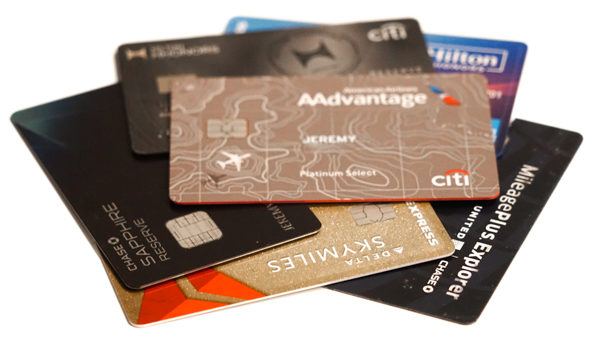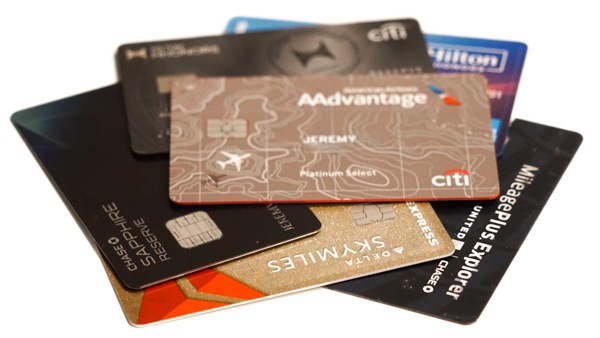Published by Jeremy. Last Updated on March 4, 2024.
Disclaimers: Our site uses demographic data, email opt-ins, display advertising, and affiliate links. Please check out our Terms and Conditions for more information. Listed prices and attraction details may have changed since our visit and initial publication.
When we tell people we often travel the world for free, they often look at is with a bit of incredulity.
Those who know us instantly assume it is because of this travel blog and that we bounce around from press trip to press trip. But we often shock them when we say that is not our scene and we go on few, if any, hosted trips. In fact, when we travel we don’t even pitch brands to work with.
It is something that we never enjoyed doing, so we don’t do it.
Our travels are instead primarily paid through points which we acquire in a mix of paying for travel with large companies and travel credit cards. So in this one, we thought we’d share about how our travel credit cards have helped us earn a ton of free (and deeply discounted) travel!
All cards featured herein are cards we personally have in our wallets right now (both of us in most cases- double the rewards!), and we will do our best to update this guide as we open or close cards in the future.
A Few Upfront Disclaimers

Before getting into it, a few disclaimers are necessary.
We were not requested to publish this article in any capacity. Some links within this post do contain referral codes, however. If you sign-up for a credit card via our links we may receive additional points into our accounts.
In addition, please note that sign-up perks, requirements, and fees are based on the offering at the time of publication and are prone to change without notice. We will update this post from time to time to reflect any changes, but we cannot guarantee that what you see below will be what is available when you click.
Finally, please review all T&Cs before signing up for a card. If you spot a discrepancy from anything posted below, please contact us and we will update this post accordingly.
Alright, now that those are out of the way lets get to the cards that we currently use to gather up points to travel with!
Chase Sapphire Preferred
Sign-Up Bonus: Generally 60,000 points after spending $4,000 in 3 months
Other Perks: $50 Chase Ultimate Rewards hotel credit per year, 5x points on hotels and cars, 2x on other travel, 3x on dining, 25% bonus on points redemption
Annual Fee: $95 annual fee
For many years, we held the premium Chase Sapphire Reserve card for its higher rewards points and getting a Priority Pass; however, after that one increased its fee to $550/year, we downgraded the card to the Preferred at a much more reasonable $95/year.
Although other cards in this list have better rewards, particularly for specific hotels or airlines, Chase is great because the portal allows for a points-to-dollar redemption as well as a bonus redemption on points. So if there is a flight or hotel deal where the overall cost is low but the branded points redemption is high, booking directly through Chase has had its perks (loss of status and no points for 3rd party bookings notwithstanding).
Still, as we are often quite flexible on where we travel, and sometimes send the Chase points off platform directly to a partner network (say, United), it is nice to have something like this card for flexibility when we don’t know what kind of reward we want to redeem.
Will we keep the card? Admittedly, one of the biggest reasons we have kept this card is simply because we’ve had it opened for so long and our credit history is high because of it. But being flexible as noted above is one reason why we are likely to keep this card and its nominal fee moving forward.
Thinking of grabbing this card? Click here to sign up for the Chase Sapphire Preferred card.
• Planning a trip? Find a flight deal.
• In need of a room? Check out hotel and apartment prices.
• Taking a cruise? Find a cruise itinerary for your journey.
• Don't overlook picking up a rental car or day tours as well!
Chase United Quest
Sign-Up Bonus: Typically 60,000 points plus 500 PQPs after spending $4,000 in 3 months
Other Perks: Two free checked bags on United, Priority Boarding, 3x miles on United per dollar spent.
Annual Fee: $250 annual fee.
For many years, I had United’s $95 credit card, the United MileagePlus Explorer (You can grab that one here). It was my first travel credit card and one of the longest I’ve had opened such that I was almost keeping it open for my credit history as much as I was any travel benefit. But around 2021, I upgraded this card to a new premium tier, the United Quest, that comes in at a $250 annual price point.
The reason I upgraded this card is simple- Angie could no longer maintain status on United, and without that we were back to having to pay checked bag fees when we travel. The Quest card is unique in that you and a companion both get checked bags on your United flight insofar as the flight is booked with the credit card.
For us, that was worth the extra $155 a year several times over as bag fees, especially second bag fees, can add up in a hurry.
Beyond this, the credit card boasts most conventional perks that you would expect- 3x on United, 2x on other travel, 2x on dining, plus $125 in United statement credit annually, $100 Global Entry credit, no foreign transaction fees, and priority boarding.
The only thing this card does not have that the $95 card does is annual lounge passes; however, as we have a Priority Pass through another card this one perk is not too bad to lose if upgrading.
Will we keep the card? We have no intention of canceling this card as long as the checked bags are included. We fly with United often enough to make this one worth it. That said, it is worth keeping in mind that flights must be booked with this card to receive the bag perks and admittedly that is something we have forgotten from time to time.
Thinking of grabbing this card? Click here to sign up for the United Quest card.
American Express Hilton Honors Aspire
Sign-Up Bonus: Typically 150,000 Hilton points after spending $4,000 in 3 months
Other Perks: 14x on Hilton Purchases, 7x on travel, 3x on other purchases, complimentary diamond status, $250 Hilton resort credit, $250 airline credit on a selected airline, Priority Pass Select, and a free night reward every year.
Annual Fee: $450 annual fee
Previously, we held the American Express Hilton Surpass card- a $95/year card that offered automatic gold status and a weekend night certificate after spending $15,000 per year. (You can snag that one here if interested.)
Part of us holding that card was because Angie traveled a ton for work and reached higher tiers on her own, but also because she could book travel using personal cards so this one was great for us not so much for the status but rather the points multiplier.
But, like our United cards, when she stopped traveling for work we lost that status, so we looked to the premium Hilton Aspire card for the higher tier status, annual hotel certificate, and annual resort credits as well.
Although we struggle to use the resort credits, the Priority Pass Select was a great one for us since we downgraded from our Chase Sapphire Reserve card and lost it there. Lower tier travel credit cards that have Priority Pass tend to cap it to 10 uses per year, but the Priority Pass Select allowed the primary card holder and two guests near unlimited access to lounges- something that quickly helped us recoup the extra cost.
It is also hard to beat the reward certificates as well as they are truly unrivaled in the rewards game. We’ve used these certificates in tandem with the complimentary status to receive upgrades to a three room suite at the Hilton Dubai Jumeira, a luxury room at the Hilton Dubrovnik, and a mini suite at the Hilton Reykjavik Nordica to name a few.
Of course, since we now only get one per year, we have to be a bit more strategic, but it is still a nice perk all the same.
Will we keep the card? This card is hit or miss for us if only because it is hard to get that resort credit benefit every year. Still, after accounting for diamond status, airline credits, a free night reward, and the untold benefits of Priority Pass, we feel like we’re still getting a good value despite a significantly higher fee than the lower tier card.
Thinking of grabbing this card? Click here to sign up for the American Express Hilton Aspire card.
Chase Marriott Bonvoy Boundless
Sign-Up Bonus: Typically 3 Free Night Awards (up to 50k points per) after spending $3,000 in 3 months.
Other Perks: 6x per $1 spent at Marriott properties, 2x per $1 on other spending. Free night on anniversary up to 35,000 points. 15 night credit on account to higher status. An extra elite night credit for every $5,000 spent.
Annual Fee: $95 annual fee
On its own, I’d say that the Chase Marriott Bonvoy Boundless card is only a decent hotel card. The anniversary night more or less covers the annual fee (and then some) and the 6x multiplier plus 15 night stay count towards status makes this a solid card for Marriott loyalists.
For me, I actually have this plus the business Marriott card on American Express which has very similar bonuses and perks as well (more on that below). But why have two when they both have the same perks? Well, with Marriott cards you can double up the night credits to get closer to a higher status (as opposed to the Hilton cards which confer status outright).
With one card, the 15 night credit will get you automatic silver status, and with a second card an additional 15 nights will get you into gold (25 night threshold). From there, it is just 20 more nights to get to platinum status which is where some really fun perks come into play (think suite upgrades, lounge access, etc). 50 nights is a bit of a stretch for us, but 20 a year is doable and most certainly worth targeting to get that upgraded status.
Will we keep the card? My two Marriott cards are primarily used as a means to reach platinum status much quicker and then reaping the rewards of upgraded stays when we travel. As the free night certificates on both cards more or less cover the annual fee, we see no reason why we’d get rid of these cards any time soon.
Thinking of grabbing this card? Click here to sign up for the Chase Marriott Bonvoy Boundless card.
American Express Marriott Bonvoy Business
Sign-Up Bonus: Upwards of 125,000 Bonvoy points with a minimum spend (ranges but tends to be higher than personal cards)
Other Perks: Gold status, 7% discount on Marriott stays, 6x per $1 spent at Marriott properties, 4x at restaurants/US gas stations/phone fees, 2x per $1 on other spending. Free night on anniversary up to 35,000 points. 15 night credit on account to higher status.
Annual Fee: $125 annual fee
American Express also offers a Marriott card, but only for business consumers. This one is slightly more expensive, $30/year more, but comes with more perks particularly in the form of automatic gold status, a slight discount on stays, and another free night certificated worth 35,000 points that more than covers the annual fee.
Objectively, this is a slightly better card than the Chase personal one simply because you automatically get gold status. But since this card also offers 15 elite night credits per year, this is a good one to combo up with if you are trying to get into higher award tiers or lifetime status (we are attempting both, hence the two cards).
So while you wouldn’t necessarily need both cards if you wanted to stop at gold status and don’t care about reaching lifetime, there are still good arguments for having both- namely two reward certificates each year which also count to Elite Night Credits when used.
Will we keep the card? As mentioned with my other card, this combination is purely a play for lifetime status at higher tiers with the 30 combined night credits annually. That said, if the program ever changed to make it harder to reach higher status and this card still kept automatic gold, we would likely keep this one and ditch our personal. But for now, let’s rack up those nights!
Thinking of grabbing this card? Click here to sign up for the Chase Marriott Bonvoy Boundless card.
A Few Notes About Opening Credit Cards
When it comes down to it, we love opening and using credit cards to help us out in accumulating a massive amount of points to travel the world for free (or close to it).
But we have to provide a word of caution in say that just because we can open several cards and keep them open, that does not mean it is the best course of action for everyone.
The reasons for this are simple, and boil down to the fact that we can simply afford the fees, can easily meet the minimum spending requirements, never pay interest, and even when factoring in all of that still come out ahead over simply paying for our trips outright.
We cannot tell you if that would be the same for your situation.
As such, if you are looking at opening credit cards for their sign up rewards we urge you to strongly look at your financial situation and see if it is practical.
If it isn’t, many of the above companies offer free cards that have no annual fee but still provide some rewards upon opening or meeting a lower minimum spending limit (typically $1,000 to $2,000). We started with these and as our income and spending grew, we upgraded. As far as maintaining good credit, there is no shame in going slow.
Book a Hotel Today
Read More Lifestyle Design Articles
About Jeremy

About the Author: Jeremy is a full-time travel writer based in Pittsburgh and primary author of this site. He has been to 70+ countries on five continents and seeks out new food, adventure activities, and off-the-beaten-path experiences wherever he travels.





Wow! Thank you for giving a great rundown on each card that YOU have actually used! I think you also do a good job conveying to use them responsively.
Thanks! We hope to keep this one a running guide to give a snapshot of cards we personally use. (And perhaps a backlog of ones we previously had as well.) Certainly helps us convey our goal of racking up points more!